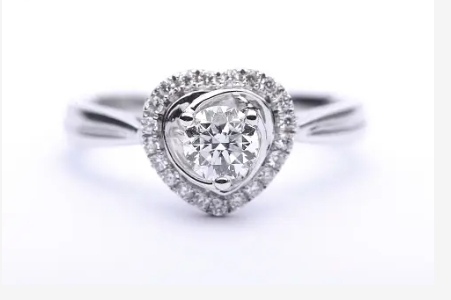Certainly! Here's a comprehensive guide to raw diamond rings, covering facts, styles, and more:
Facts About Raw Diamond Rings:
Natural Beauty: Raw diamond rings feature diamonds in their natural, uncut state, showcasing their unique and raw beauty.
Uniqueness: Each raw diamond is one-of-a-kind, with its own distinct shape, color, and characteristics, making every ring unique.
Ethical Choice: Raw diamonds are often considered more ethical and environmentally friendly than traditional diamonds, as they are typically mined with less environmental impact and fewer human rights concerns.
Symbolism: Raw diamond rings can symbolize strength, authenticity, and embracing imperfections, making them a meaningful choice for engagement rings, wedding bands, or special gifts.
Styles of Raw Diamond Rings:
Solitaire: A single raw diamond set on a simple band, allowing the natural beauty of the diamond to take center stage.
Halo: A cluster of smaller diamonds surrounding a larger raw diamond, enhancing its brilliance and creating a stunning halo effect.
Three-Stone: Featuring three raw diamonds of varying sizes, symbolizing the past, present, and future of a relationship.
Bezel Set: The raw diamond is surrounded by a metal rim, providing added protection while maintaining a minimalist aesthetic.
Tension Set: The raw diamond appears to be suspended between two ends of the band, creating a modern and eye-catching design.
Cluster: Multiple raw diamonds arranged closely together, offering a bold and unconventional look.
Vintage: Incorporating intricate details and designs inspired by different eras, such as Victorian or Art Deco, for a timeless and romantic aesthetic.
Choosing a Raw Diamond Ring:
Quality: Look for a raw diamond with desirable characteristics such as clarity, color, and shape. While raw diamonds may have imperfections, choose one that appeals to your personal taste.
Setting: Consider the style and setting that best complements the raw diamond, whether you prefer a minimalist setting to highlight the diamond or a more elaborate design.
Metal: Choose a metal for the band that complements the color of the raw diamond, such as white gold, yellow gold, rose gold, or platinum.
Customization: Many jewelers offer customization options, allowing you to create a unique raw diamond ring tailored to your preferences and budget.
Certification: If purchasing a raw diamond for an engagement ring or investment, consider getting a certification from a reputable gemological laboratory to verify its authenticity and quality.
Care and Maintenance:
Gentle Cleaning: Clean your raw diamond ring regularly with a soft brush and mild soapy water to remove dirt and oils.
Avoid Harsh Chemicals: Avoid exposing your ring to harsh chemicals or abrasive cleaners, as they can damage the raw diamond and metal.
Professional Inspection: Periodically have your raw diamond ring inspected by a professional jeweler to ensure the setting is secure and the diamond is in good condition.
Safe Storage: When not wearing your raw diamond ring, store it in a soft pouch or jewelry box to protect it from scratches and damage.
.png)

.png)
Comments
Post a Comment